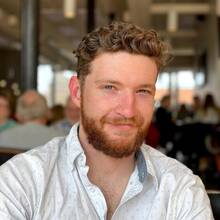Walking into the corner store to grab a coffee, you pass two Sudanese women sitting on a bench, arguing about when the pandemic might finally be over. Inside, you grab a Coke and a bag of chicharrones, and the Salvadoran clerk rings you up. As you chat, you learn that he is worried about his daughter going back to public school in the midst of the Covid-19 pandemic, but his family cannot afford another computer for her at home; and their internet is bad anyway. Outside, a road repair truck pulls up; a gaggle of white and Hispanic workers jump out in bright green vests; they grab some Gatorade and smoke cigarettes.
This scene is not at a bodega in the Bronx. It is at a gas station in Marshalltown, a city of about 28,000 in central Iowa, where agricultural work, meat processing and refugee resettlement are making for an increasingly diverse population. Despite the deepening urban-rural divide in U.S. politics (in 2016, Donald Trump got less than 10 percent of the vote in Manhattan and Washington, D.C., but more than 80 percent in hundreds of counties across the Farm Belt), Marshalltown and many small communities like it are facing challenges not so different from those faced in big cities.
One in five residents of rural counties in the United States is a person of color.
One in five residents of rural counties in the United States is a person of color. Most rural counties have been declining in population over the past decade; the exceptions (scattered throughout the states, including Iowa, Kansas and Oklahoma) have generally seen significant increases in their foreign-born populations. While the white rural population continues to decline, Hispanic and American Indian populations in these areas are growing.
Longstanding problems of poverty, drug addiction, inadequate funding for local governments and a lack of access to medical care precede recent demographic changes, and they affect rural residents of all races. The share of the population in completely rural counties without health insurance remains higher, at 12.3 percent, than in mostly urban counties (10.1 percent). Rural Americans also suffer from high rates of lung disease, hypertension and diabetes. And just as there are “food deserts” in Detroit and Oakland, five million rural Americans live more than 10 miles from a full-service grocery store.
Many rural areas in the United States have also been hit hard by the Covid-19 pandemic, especially in areas around meatpacking plants in the Midwest; and many rural counties, like Marshall County, Iowa, where Marshalltown is located, have higher rates of infection than does New York City.
Pope Francis asks us to “go to the margins” to preach the Gospel. In that spirit, we must all remember the places that are literally remote from the centers of power, the places that are often out of sight and out of mind for the decision-makers in a few large cities.
We must all remember the places that are literally remote from the centers of power, the places that are often out of sight and out of mind for the decision-makers in a few large cities.
Many rural communities have already shown solidarity with Americans in urban centers. For example, amid the protests over the killing of George Floyd that swept U.S. cities early this summer, something remarkable happened. People crowded into town greens across the United States to protest racism and listen to their Black neighbors share their stories. In Spencer, Iowa, hundreds of people gathered to pray and to march.
Our political divisions can provide excuses for dismissing the concerns of people in “red” or “blue” states, but our faith cannot allow us to give in to polarization. The growing racial diversity of rural areas reminds us that perception can lag behind reality, but all of us should have been paying attention to the challenges facing rural America all along.
In today’s world, the effects of sin are seen in the divisions between rich and poor; between races; and, increasingly, between city and country. But the Gospel tells us that an affront to justice anywhere is an affront to it everywhere.
Most people in the rural United States, whether they live in their hometowns or have moved from cities to start new lives, want to be able to take care of their families and loved ones. They want to be a part of a healthy community, and they want to share a good life together. That is not so different from what folks want in Boston, Houston or Chicago.
We must challenge the divisions in our nation that the powerful exploit for their own gain and instead speak to one another across barriers, not only during an election season but throughout our lives. The growing diversity of rural America is a reminder that, city or country, we have a shared future, and making that future equitable and just means replacing separation with solidarity.









